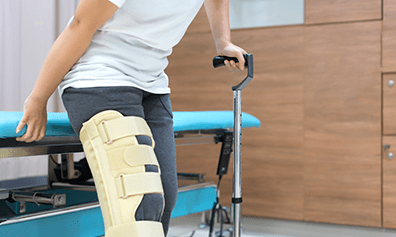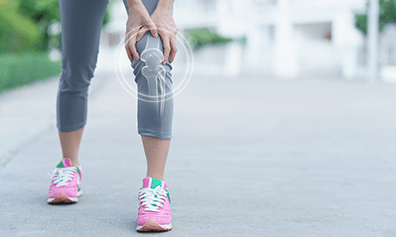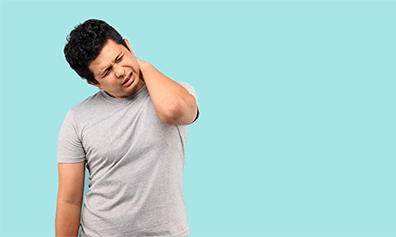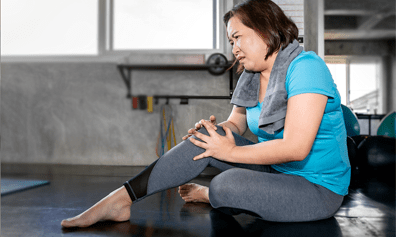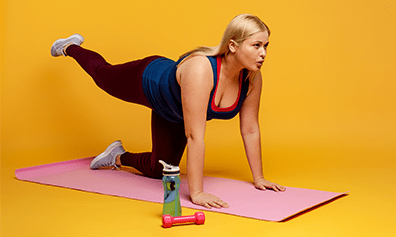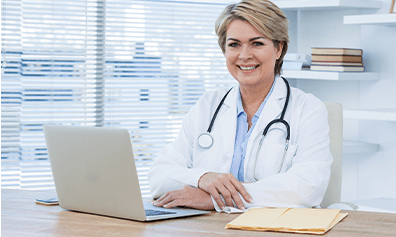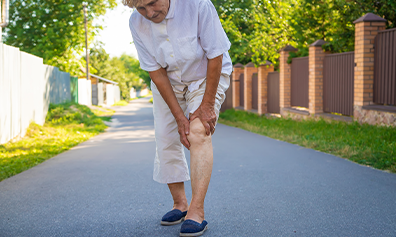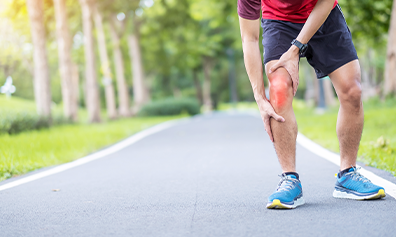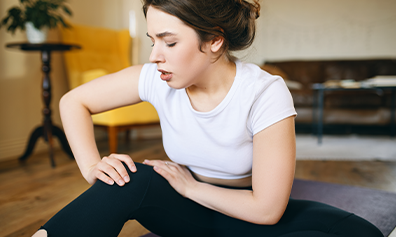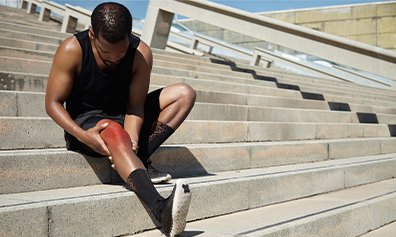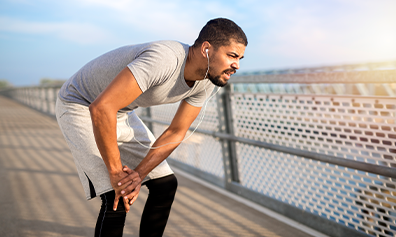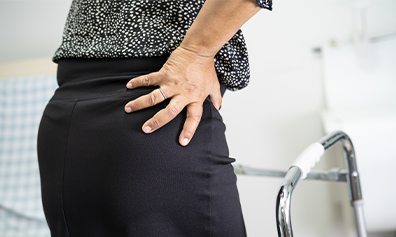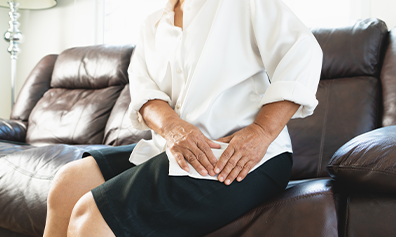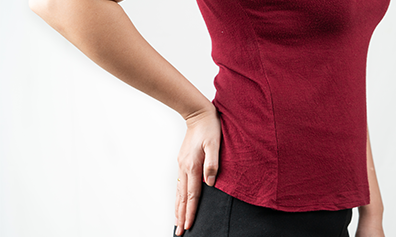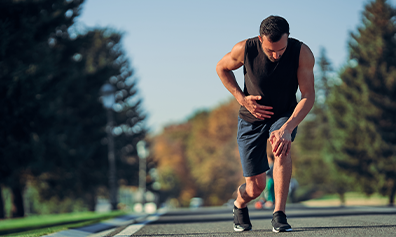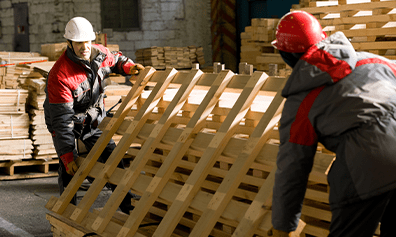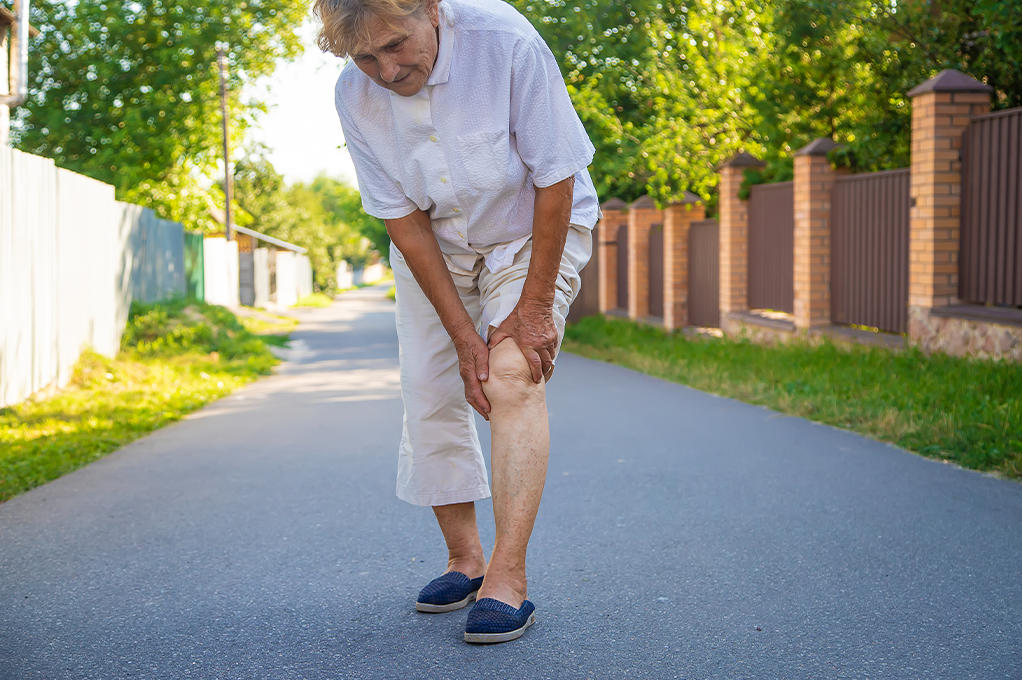
What is osteoarthritis?
Osteoarthritis is a degenerative disease that worsens over time, often resulting in chronic pain. Joint pain and stiffness can become severe enough to make daily tasks difficult. Depression and sleep disturbances can result from the pain and disability of osteoarthritis.
What are the causes of osteoarthritis?
Osteoarthritis occurs when the cartilage that cushions the ends of bones in your joints gradually deteriorates. Cartilage is a firm, slippery tissue that enables nearly frictionless joint motion. Eventually, if the cartilage wears down completely, the bone will rub on the bone.
Osteoarthritis has often been referred to as a "wear and tear" disease. But besides the breakdown of cartilage, osteoarthritis affects the entire joint. It causes changes in the bone and deterioration of the connective tissues that hold the joint together and attach muscle to bone. It also causes inflammation of the joint lining.
Risk Factors
Factors that can increase your risk of osteoarthritis include:
- • Older age - The risk of osteoarthritis increases with age.
- • Sex - Women are more likely to develop osteoarthritis, though it isn't clear why.
- • Obesity - Carrying extra body weight contributes to osteoarthritis in several ways, and the more you weigh, the greater your risk. Increased weight adds stress to weight-bearing joints, such as your hips and knees. Also, fat tissue produces proteins that can cause harmful inflammation in and around your joints.
- • Joint injuries - Injuries, such as those that occur when playing sports or from an accident, can increase the risk of osteoarthritis. Even injuries that occurred many years ago and seemingly healed can increase your risk of osteoarthritis.
- • Repeated stress on the joint - If your job or a sport you play places repetitive stress on a joint, that joint might eventually develop osteoarthritis.
- • Genetics - Some people inherit a tendency to develop osteoarthritis.
- • Bone deformities - Some people are born with malformed joints or defective cartilage.
- • Certain metabolic diseases - These include diabetes and a condition in which your body has too much iron (hemochromatosis)..
What are the symptoms of osteoarthritis?
Osteoarthritis symptoms often develop slowly and worsen over time. Signs and symptoms of osteoarthritis include:
- • Pain - Affected joints might hurt during or after movement.
- • Stiffness - Joint stiffness might be most noticeable upon awakening or after being inactive..
- • Tenderness - Your joint might feel tender when you apply light pressure to or near it.
- • Loss of flexibility - You might not be able to move your joint through its full range of motion.
- • Grating sensation - You might feel a grating sensation when you use the joint, and you might hear popping or crackling.
- • Bone spurs - Extra bits of bone, which feel like hard lumps, can form around the affected joint.
- • Swelling - This might be caused by soft tissue inflammation around the joint.
How do you prevent osteoarthritis?
Although osteoarthritis (or OA) is more common as we age, it is not an inevitable part of aging. As researchers work to understand the causes of osteoarthritis, they can offer advice to help prevent the disease or its progression and lessen its impact on your life
Here are four steps you can take now to prevent osteoarthritis or its progression:
1. Control Weight -
Osteoarthritis is a degenerative disease that worsens over time, often resulting in chronic pain. Joint pain and stiffness can become severe enough to make daily tasks difficult. Depression and sleep disturbances can result from the pain and disability of osteoarthritis.
2. Exercise-
Exercise is essential to improve flexibility, joint stability, and muscle strength and has been shown to decrease the amount of pain and disability that osteoarthritis sufferers experience..
3. Avoid Injuries or Get Them Treated at the Earliest-
Suffering a joint injury when you are young predisposes you to osteoarthritis in the same joint when you are older. Injuring a common as an adult may put the joint at even greater risk. To avoid common injuries when exercising or playing sports, the National Institute of Arthritis and Musculoskeletal and Skin Diseases recommends the following:
- • Avoid bending knees past 90 degrees when doing half knee bends
- • Keep feet as flat as possible during stretches to avoid twisting knees.
- • When jumping, land with knees bent.
- • Perform warm-up exercises before any fitness regime and cool down appropriately after workout.
- • Wear properly fitting shoes that provide shock absorption and stability.
- • Exercise on the softest surface available; avoid running on asphalt and concrete
If you have a joint injury, it's important to get prompt medical treatment and take steps to avoid further damage.
4. Eat Right
Some of the following nutrients have been associated with a reduced risk of osteoarthritis and its severity.
- • Omega-3 fatty acids - These healthy fats reduce joint inflammation, while unhealthy fats increase it. Good sources of omega-3 fatty acids include fish oil and certain plant/nut oils, including walnut, canola, soybean, flaxseed/linseed, and olive.
- • Vitamin D - Your body makes most of the vitamin D it needs in response to sunlight. You can get more vitamin D in your diet by eating fatty fish such as salmon, mackerel, tuna, sardines, herring, vitamin D-fortified milk, cereal, and eggs.
Exercise Tips for Knee Osteoarthritis
- • Take it slow and steady when you exercise by working out at your own pace. .
- • Be consistent with your workout plan as stiffness can set in within a few days of not working out. Even a mere 15 minutes of stretching can have great benefits on the health of the joint.
- • Respect your body - Some soreness is expected after the first couple of days of starting an exercise program. But if your pain gets worse, stop exercising and call your doctor immediately. Don't feel like you have to exercise through the pain: Listen to what your body is telling you.
Keeping these tips in mind, exercising with knee osteoarthritis can be easy and a good way to manage your knee osteoarthritis symptoms.
How do you manage osteoarthritis?
There is no cure for osteoarthritis. Mild to moderate symptoms are usually well managed by a combination of pharmacologic and non-pharmacologic treatments. Medical treatments and recommendations include:
- • Medications (topical pain medicines and oral analgesics including nonsteroidal anti-inflammatory medications, NSAIDs) .
- • Exercise (land and water-based)
- • Intermittent hot and cold pack treatment may provide temporary relief of pain and stiffness.
- • Physical, occupational, and exercise therapy.
- • Weight loss in overweight persons who have osteoarthritis has been shown to reduce stress and the amount of pain in weight-bearing joints as well as moderate the inflammatory processes that contribute to OA.
- • Healthy eating, managing diabetes and cholesterol
- • Supportive devices such as braces, orthotics, shoe inserts, cane, or walker can help decrease stress on affected joints. Braces and orthotics help to support and stabilize painful, damaged joints.
- • Intra-articular injection therapies.
- • Complementary and alternative medicine strategies, including vitamins and supplements
Surgery may be helpful to relieve pain and restore function when other medical treatments are ineffective or have been exhausted, especially with advanced OA
The goals of treatment are to:
- • Decrease joint pain and stiffness and delay further progression.
- • Improve mobility and function
- • Increase patients' quality of life.
The type of treatment regimen prescribed depends on many factors, including the patient's age, overall health, activities, occupation, and severity of the condition.
Exercises for Knee Osteoarthritis
Exercise is important to improve flexibility, joint stability, and muscle strength. Regimens such as swimming, water aerobics, and low-impact strength training are recommended for people with osteoarthritis as they decrease the amount of pain and disability that osteoarthritis sufferers experience. The safest exercises place the least bodyweight on the joints, such as bicycling, swimming, and another water exercise. Light weight lifting is another option but first, speak with your doctor if you already have osteoarthritis. If fear of joint pain after exercise keeps you from exercising, try using heat and cold on painful joints or take pain relievers. Doing so may make it easier to exercise and stay active. Excessively vigorous exercise programs are best avoided, as they may increase arthritis symptoms and potentially hasten the progression of the disease.
Physical therapists can provide appropriate and tailored exercise regimens for individuals with osteoarthritis.
The main exercises that are most recommended by physical therapists for people with osteoarthritis are:
- • Strengthening exercises
Strengthening exercises help build muscles, which act as shock absorbers for your knee joints, reducing some of the impacts to your joints. These exercises can be gradually incorporated into your workout routine until you can do about 15 minutes of strengthening exercises a day. Don't use weights initially and instead use your body weight as resistance. However, as you become more familiar with the moves, you can add some light weights. Strengthening your quadriceps muscles gives the most relief from the symptoms of osteoarthritis.
You can perform them as follows:
- 1 Stand with your back to a wall, with feet shoulder-width apart.
- 2 Then lean back against the wall, placing your feet out in front of you as far as you comfortably can.
- 3 Bend at the knees, put your hands on your waist, and slide with your spine, maintaining contact with the wall until you reach a sitting position. (Your knees should not bend more than 90 degrees).
- 4 Then slowly slide back to your original position. Repeat eight to 10 times.
- • Flexibility exercises:
Because knee OA often makes it hard to move, flexibility exercises are essential. Doing them regularly can help increase range of motion, make your knees more flexible, and restore normal knee joint function. Both strengthening and flexibility exercises are important because they can help take the strain off the knee. Your physical therapist will create a physical therapy plan for you—one that may incorporate a combination of passive and active treatments for knee osteoarthritis, depending upon your severity and symptoms.
- • Aerobic exercises
Aerobic exercises such as walking and water aerobics add another dimension to your workouts. For example, working out in the water is so much easier on your joints than running.
Telehealth to Your Rescue
During these times of global pandemic, it can be challenging to find the help you need to maintain your joint health. But with telerehabilitation services, you can get the benefits of physical therapy from the comfort of your home without worrying about exposure or transport. TheraNow, one of the best telerehabilitation services with excellent expertise in the field of online physical therapy with our team of virtual physical therapists, is waiting to provide you the care you need to get your life back in its happy place. You can book your appointment by visiting us at Theranow: Online Physical Therapy Services .

